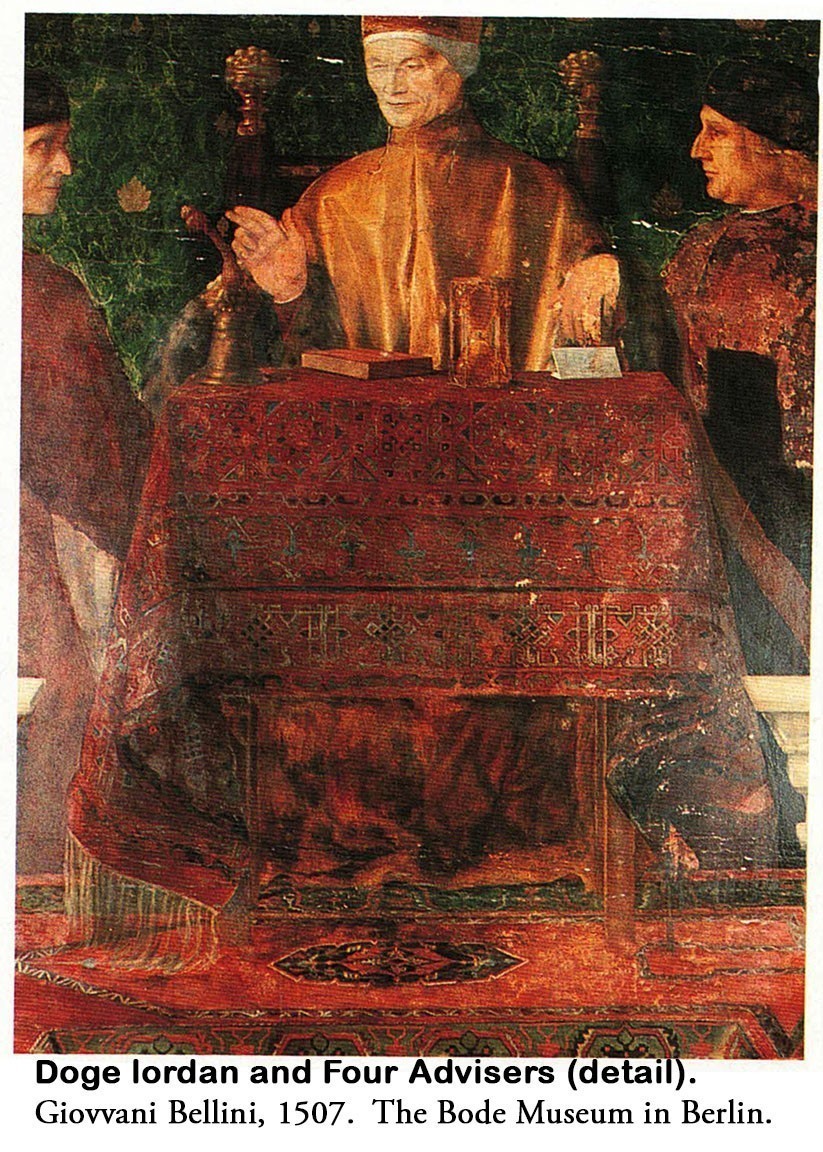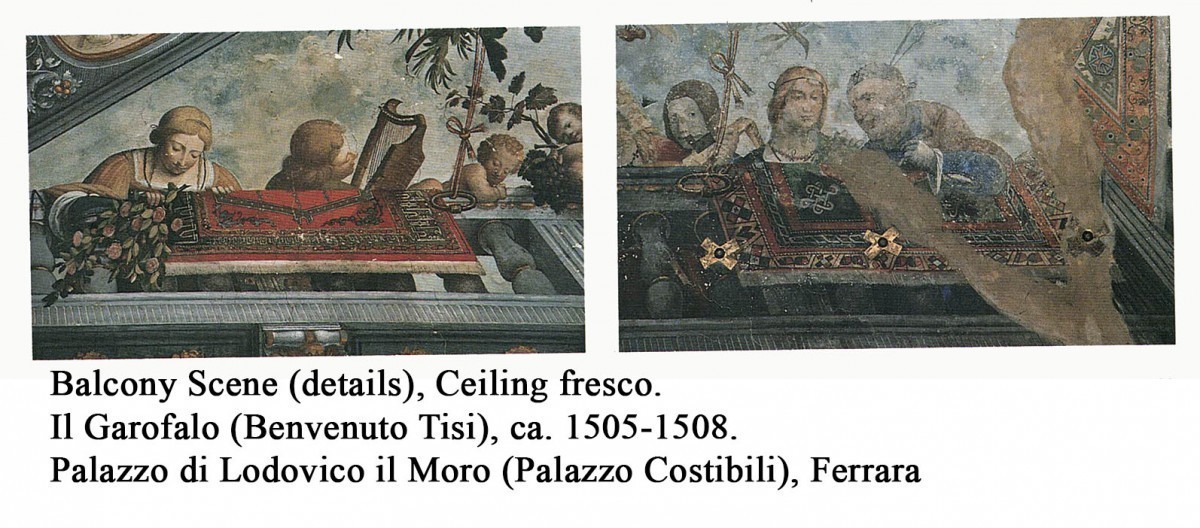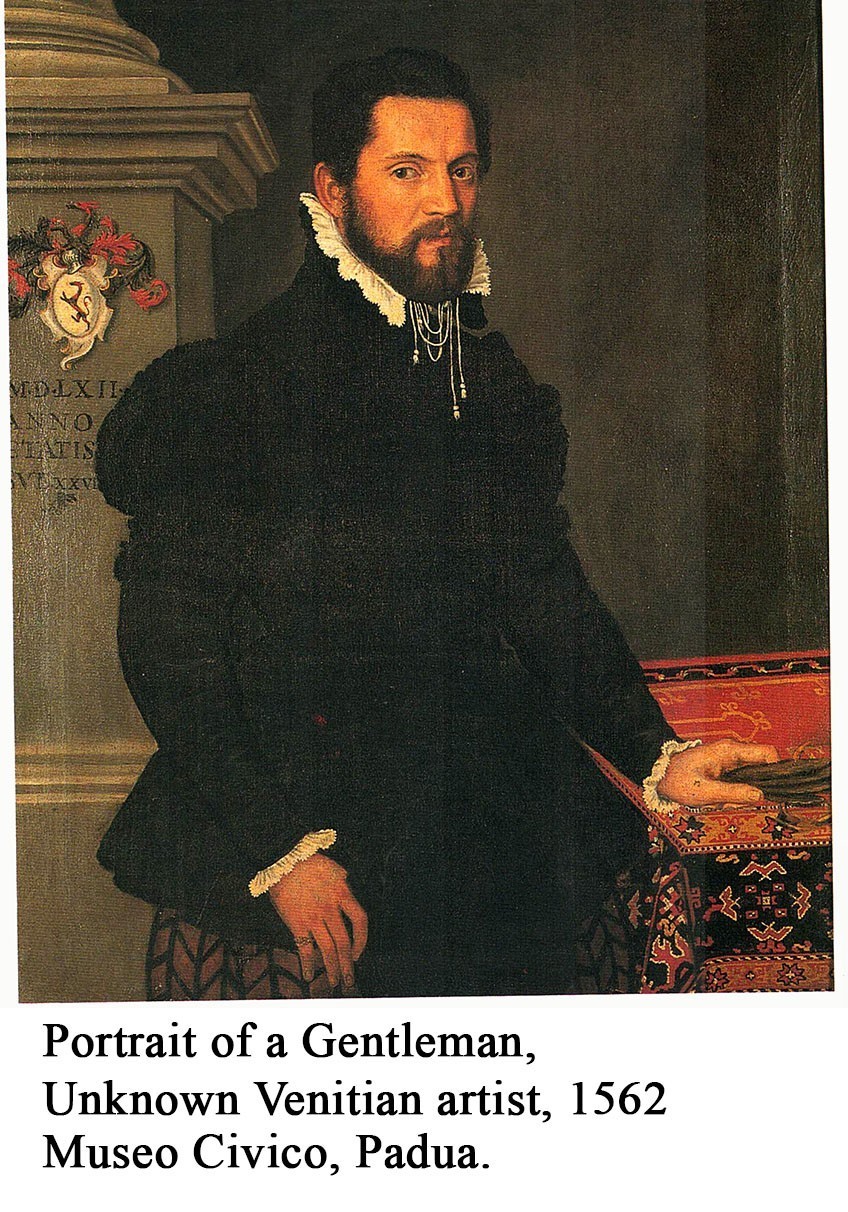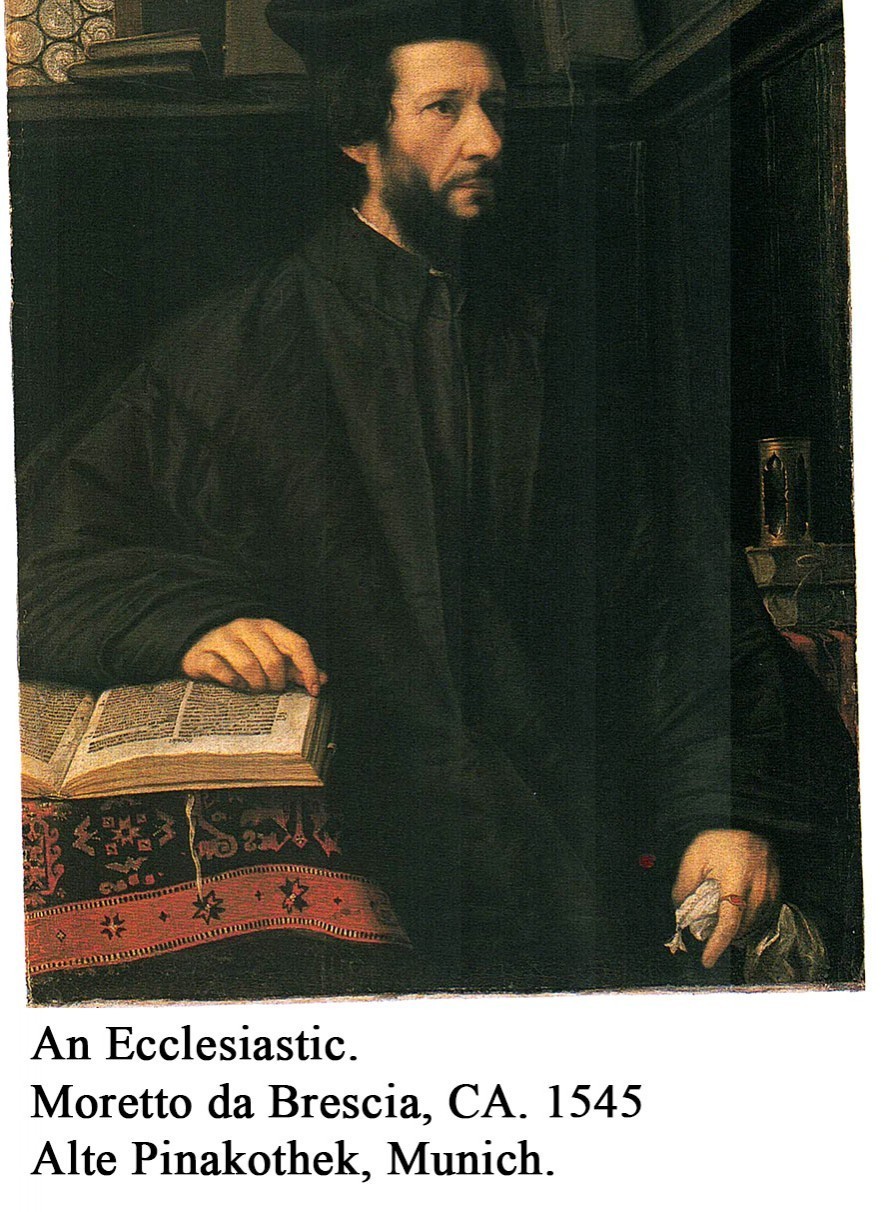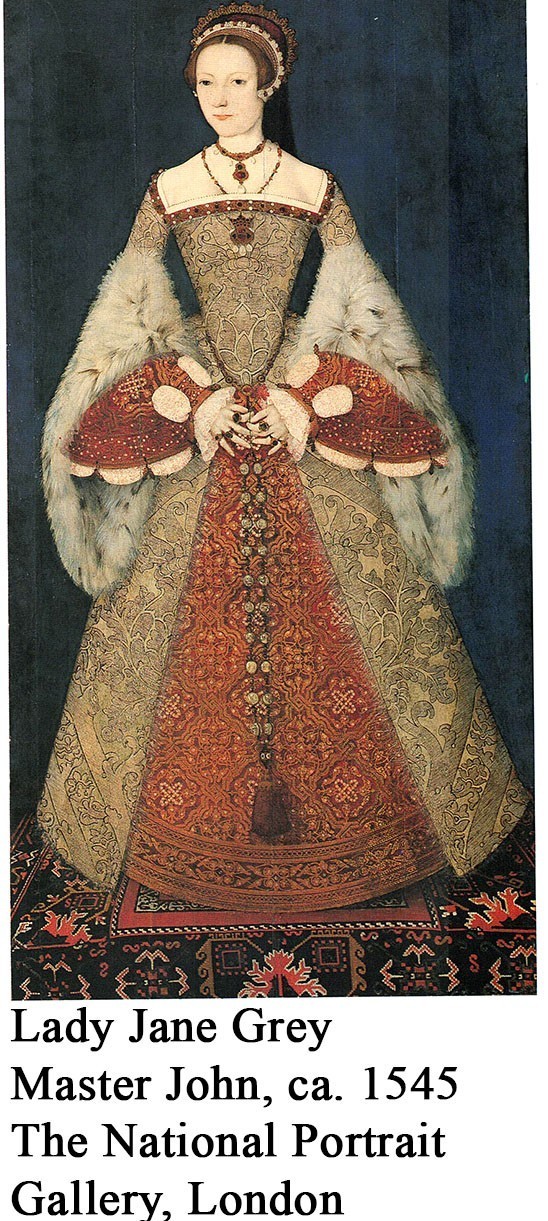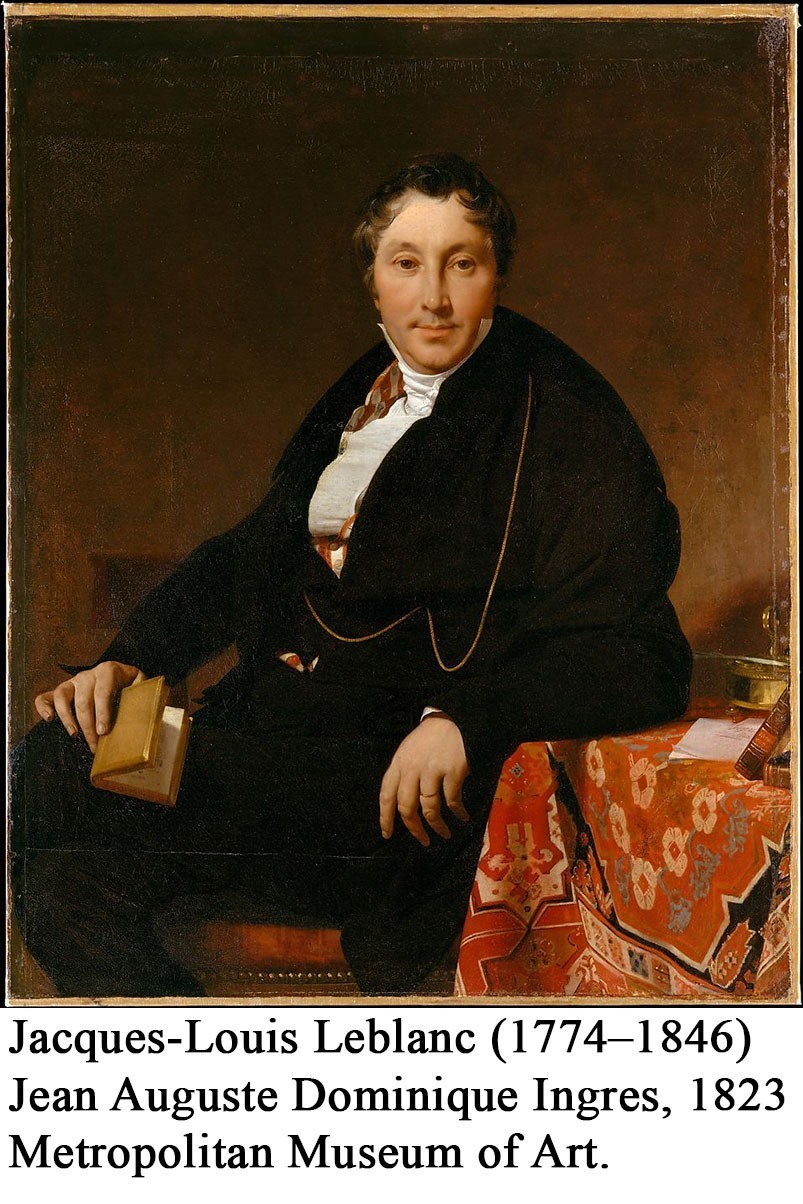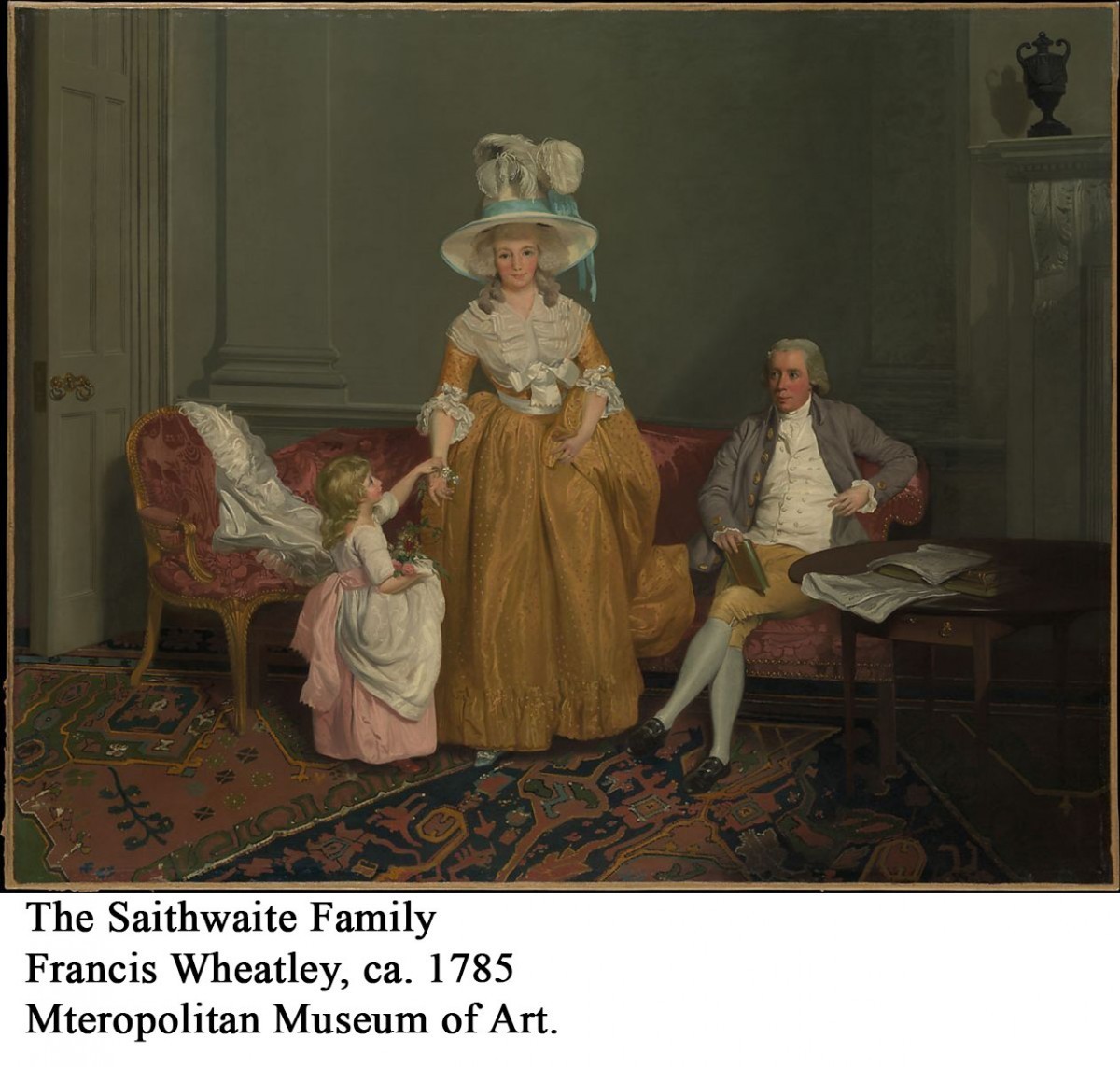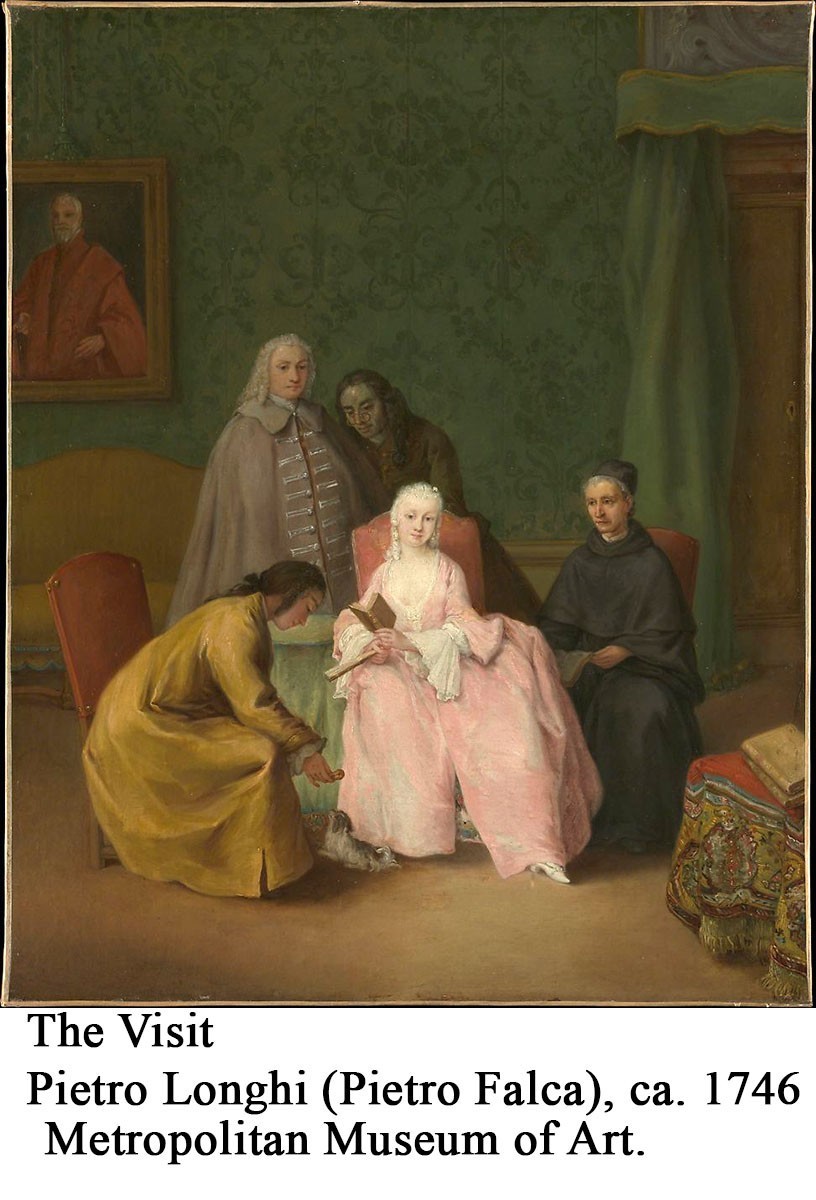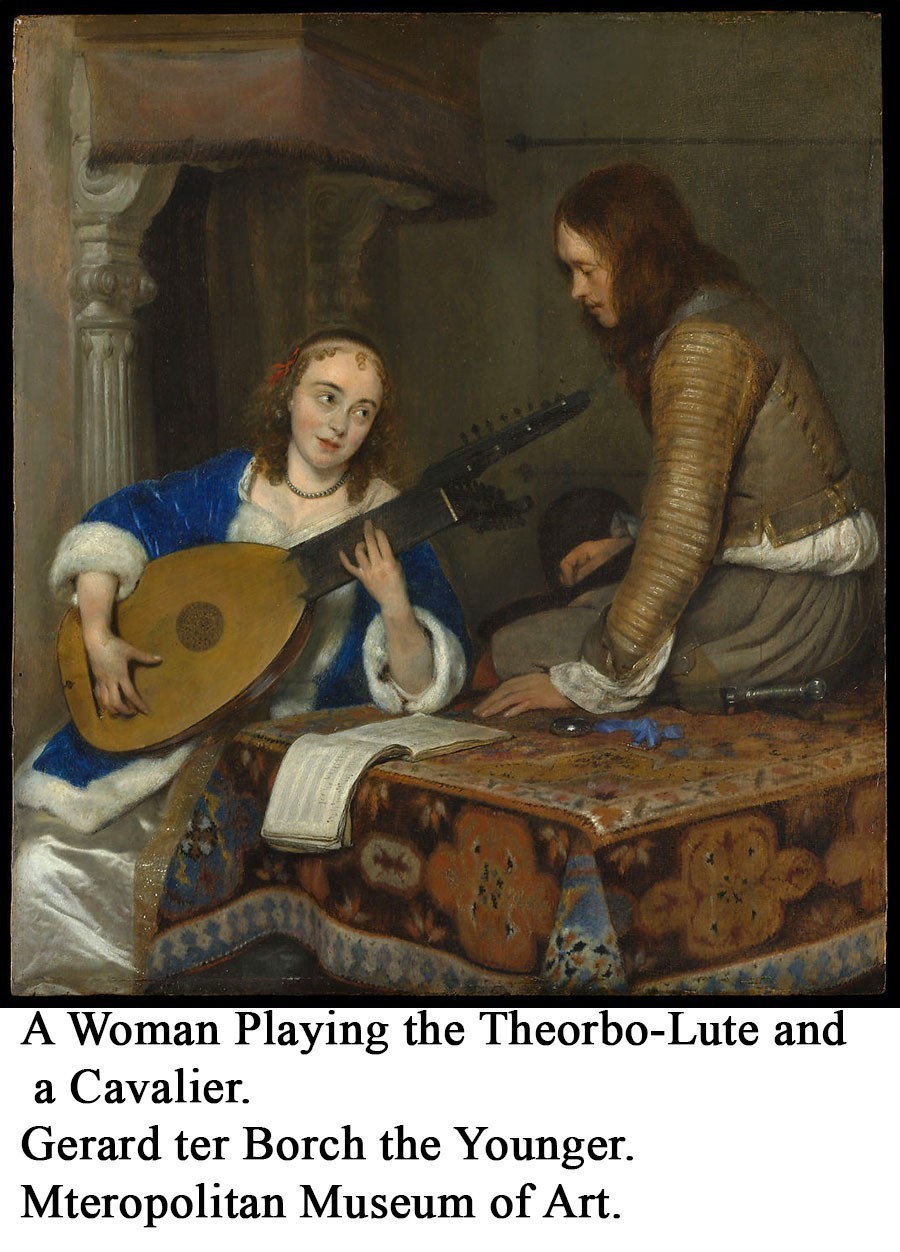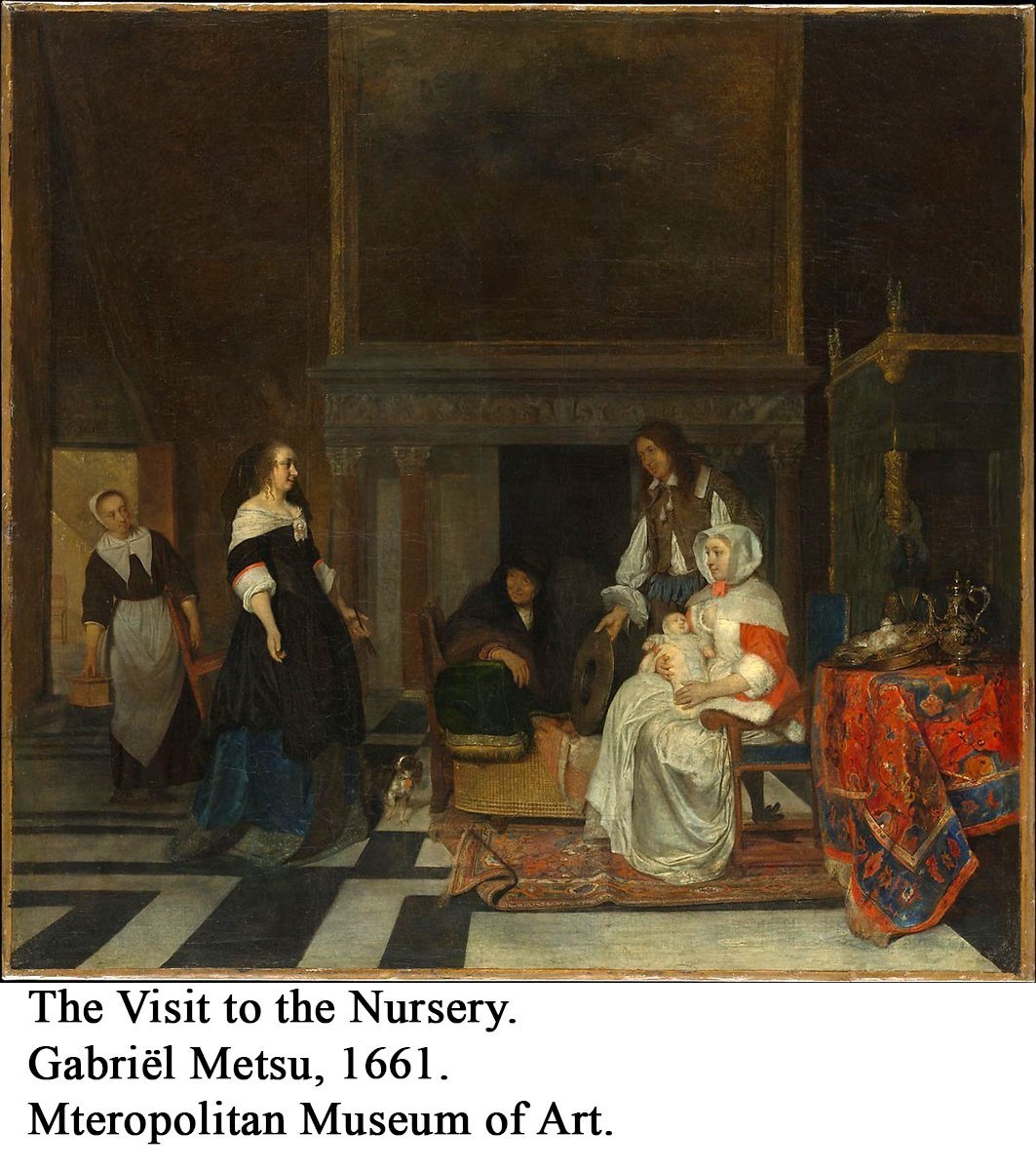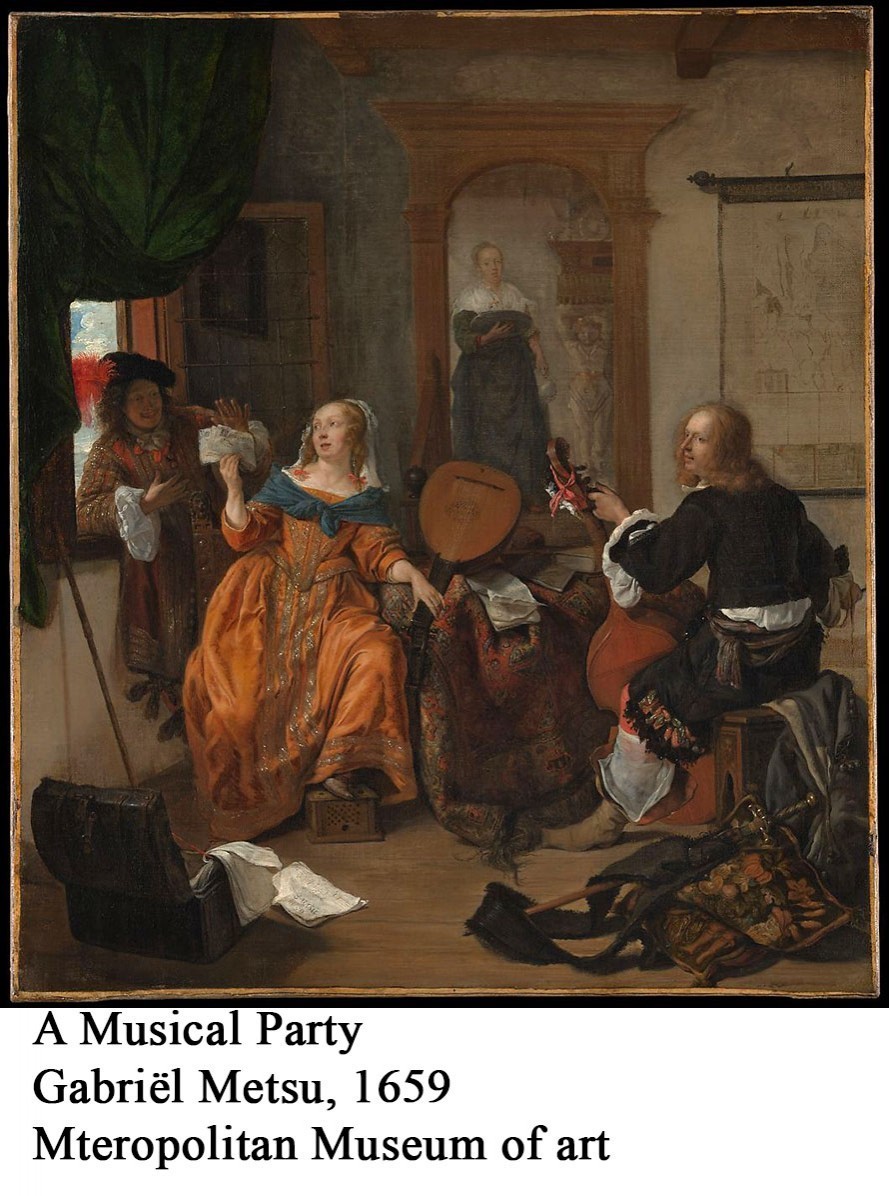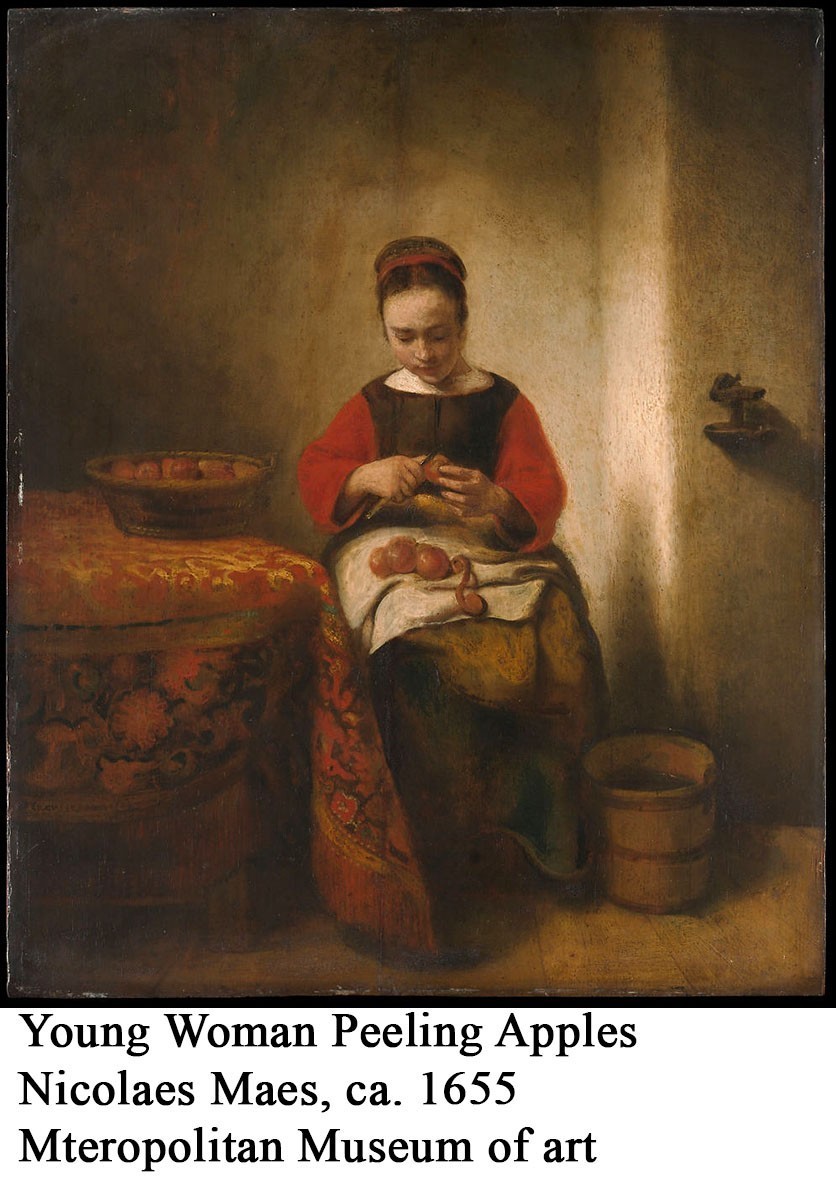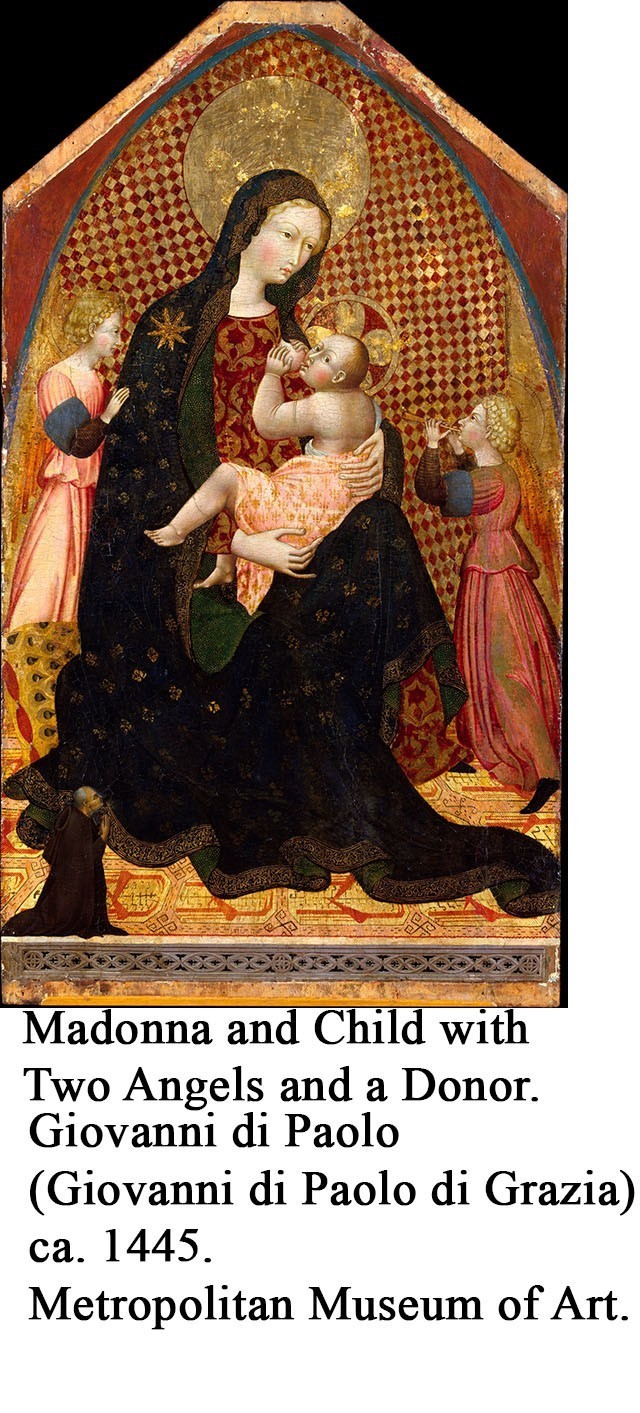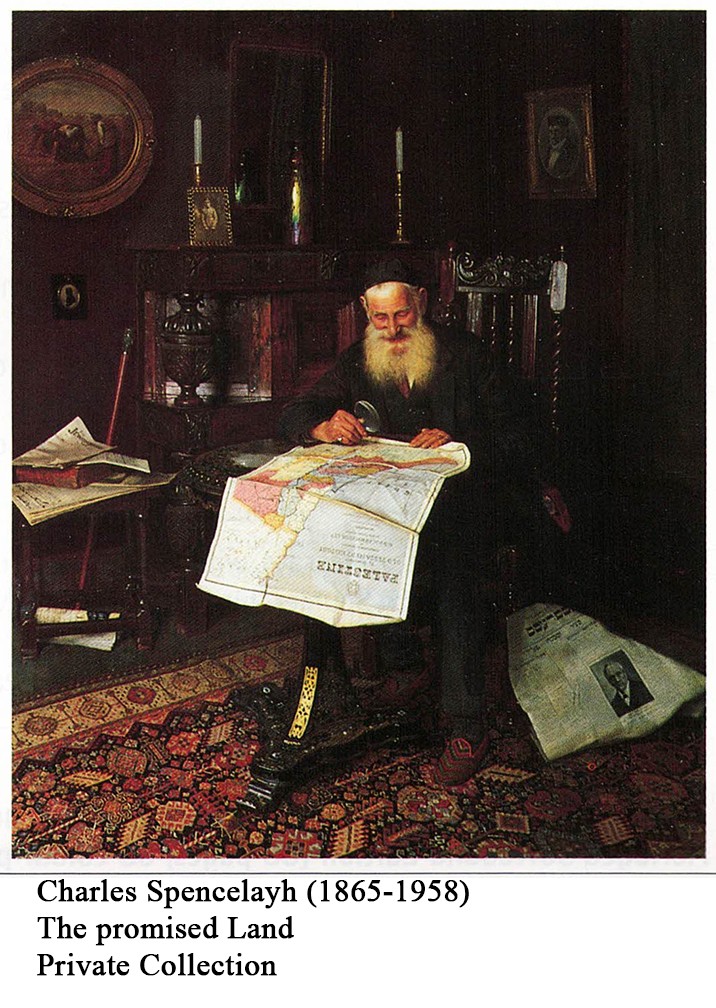Oriental Rugs Dictionary
Rugs in Paintings
The popularity of what we call oriental carpets pile-woven carpets from the Islamic world in Europe from the fourteenth century onward is reflected in their frequent depiction in European paintings. Indeed, European paintings are a primary source for scholarship on early carpets, and many groups of Islamic carpets from the Middle East are today called by the names of European painters who depicted them: Lotto, Holbein, Ghirlandaio, Crivelli, and Memling are among the artists whose names are now used to describe certain groups of carpets woven in Ottoman Turkey. From biblical times onward, the concept of having an expensive textile underfoot has been associated with wealth, power, and sanctity; when the Sienese painter Duccio depicted the story of those who spread their garments under Christ’s feet on Palm Sunday, he was simply renewing an age-old cultural concept. By the time Sir Walter Raleigh put his cloak on the ground to help Queen Elizabeth over a mud puddle, the mystique of textiles underfoot had been around for millennia. A fifteenth-century painting by Giovanni di Paolo, Madonna and Child with Two Angels and a Donor, depicts under the feet of the Virgin Mary one of the earliest and rarest types of carpets from Turkey to be exported in quantity to Italy; the design consists of highly stylized animals in octagons. By the sixteenth century, carpets were frequently depicted in portraits as a signifier of sophistication, education, and high social and economic status; an anonymous portrait by Moretto da Brescia shows at the very bottom a minor border of a contemporary Anatolian rug from Ottoman Turkey; the design of the rest remains an enigma . By the seventeenth century, depictions of carpets were widespread throughout Europe. Carpets woven in Syria were extremely rare in Europe: a painting by Gabriël Metsu entitled A Musical Party shows a so-called chessboard carpet with a design of geometrical stars from early seventeenth-century Syria over a table (91.26.11 Medallion carpets woven in Ushak in west-central Turkey were also depicted frequently in European paintings. Metsu’s sumptuous The Visit to the Nursery shows a large Ushak medallion carpet draped over a table. The Metropolitan has several Ushak carpets of this type in its collection. The attractive genre scene by Gerard ter Borch, the Younger, entitled A Woman Playing the Theorbo-Lute and a Cavalier depicts a small west Anatolian medallion carpet with an unsual design on the table in front of his musical couple. Although Johannes Vermeer‘s lifetime output of paintings was very small, a large portion of them contains depictions of oriental carpets. Two in particular feature carpets prominently: the famous A Maid Asleep depicts two different seventeenth-century Anatolian carpets, while Young Woman with a Water Pitcher shows a soft and thickly textured Persian carpet, again on a table, with a design of floral arabesques on a red ground. The tradition of showing carpets on tables in upper-class interiors continued well into the eighteenth century; Pietro Longhi’s The Visit shows a West Anatolian prayer carpet from the Gördes district draped over a table in an elegant Italian interior . As carpets became more affordable in Europe, very large examples were imported for use as floor covering. Francis Wheatley’s The Saithwaite Family, for example, presents an aristocratic British couple and their daughter on a very large eighteenth-century carpet from Ushak. In early nineteenth-century France, Jean August Dominique Ingres, a great admirer of Italian Renaissance art, self-consciously referred back in time to earlier portraits in his well-known portrait of Jacques-Louis Leblanc. The carpet-covered table shown with books, a handwritten letter or manuscript, and an inkwell (a concept that horrifies today’s textile conservators) refers to a long tradition in European painting, in which carpets are associated not only with economic and social status in general, but also with learning and literacy. The small carpet on the table, of a well-known eighteenth-century type from Anatolia, is strikingly similar to an actual example from the McMullan collection in the Metropolitan. Depictions of carpets in European and American paintings continued throughout the twentieth century, in works as diverse as the Orientalist paintings of Matisse or American interiors by artists such as William Glackens; the colors, textures, and patterns of carpets continue to fascinate patron and painter alike into our own time.
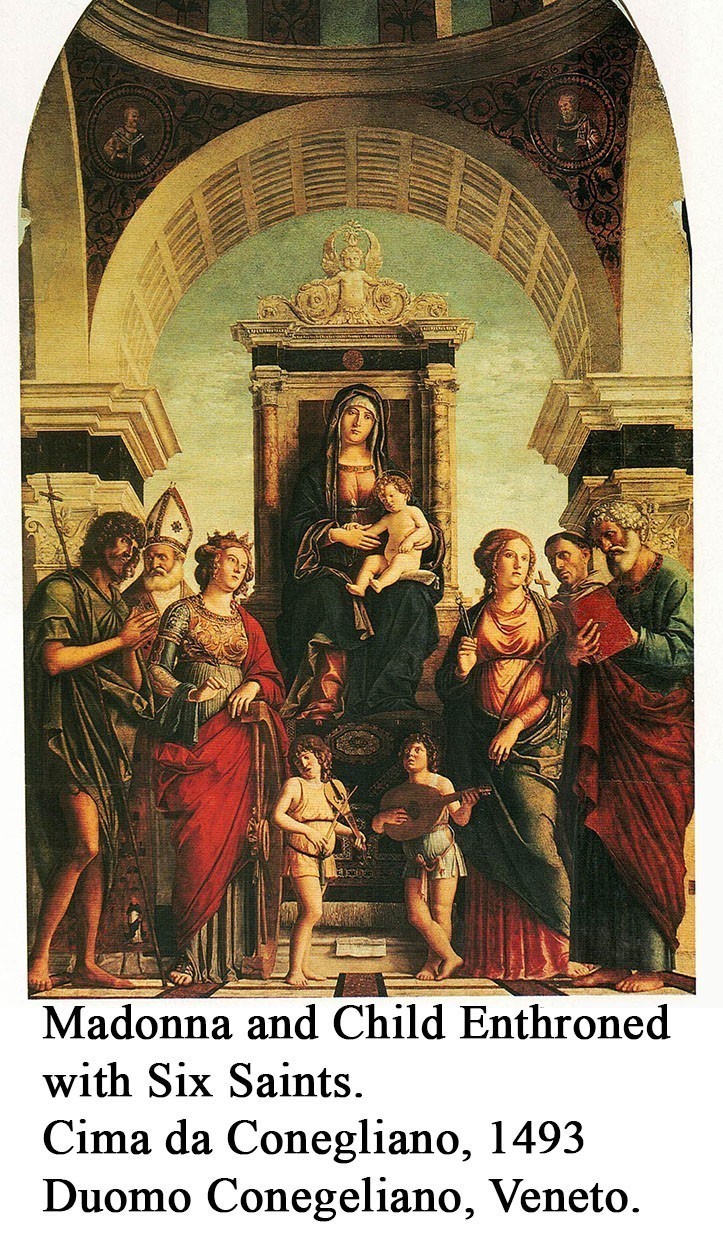
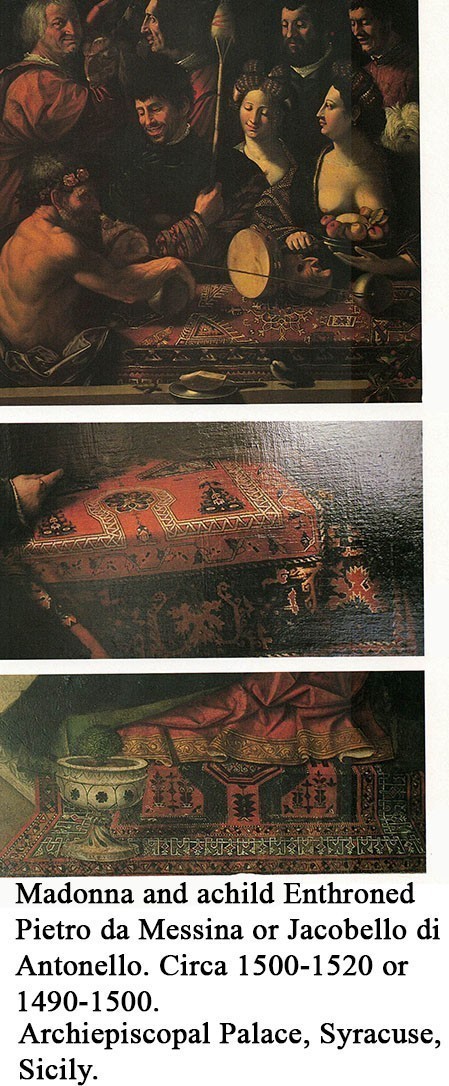
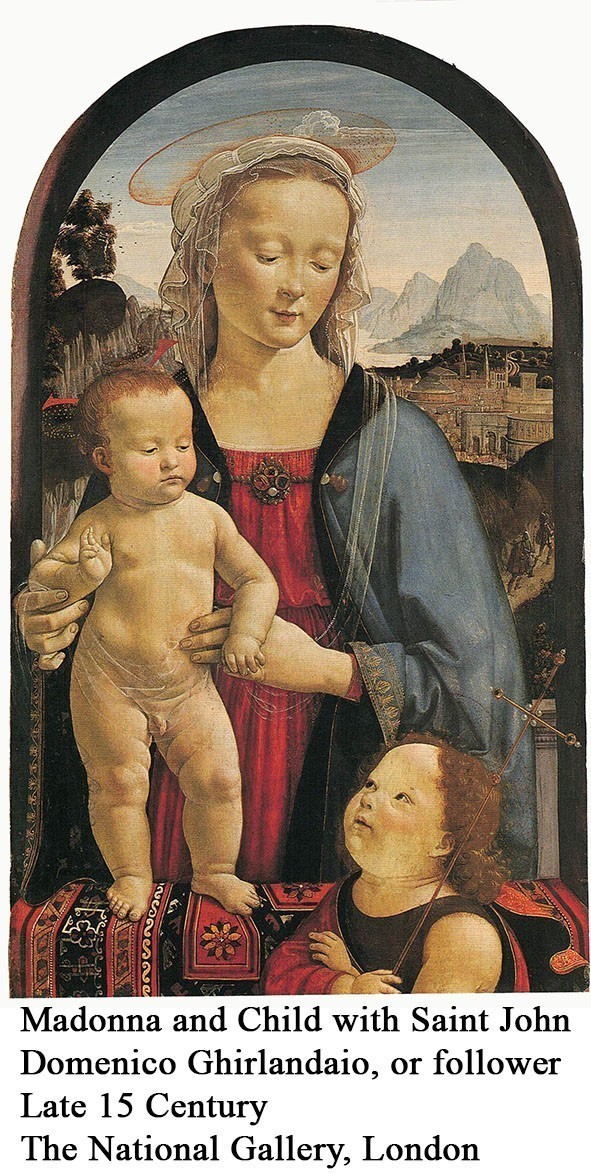
.jpg)
.jpg)
.jpg)
